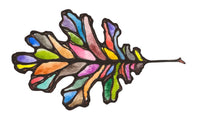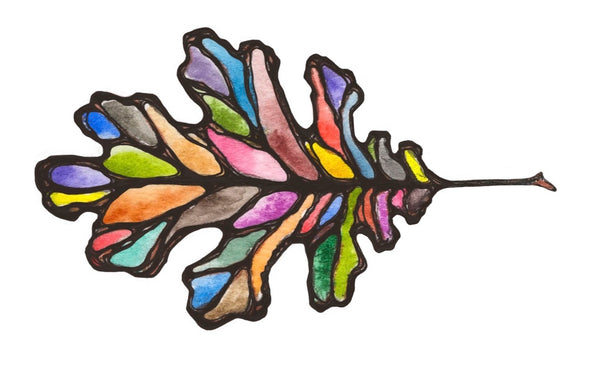How To Use Ox Gall In Watercolor Painting
Before I gross you out, let's start, briefly, with why watercolor and ox gall are even a pair. When browsing the watercolor section of the art supply shop, you've probably noticed a line of little bottles with relatively vague information on the labels. Ox gall is usually in one of these bottles, sold as a watercolor additive.

Ox gall is used in watercolor as a wetting agent, dispersant, or surfactant, generally to improve flow and/or aid in wetting your paper. We'll explain what that all even means in a minute.
[For relevant terms, I will italicize them the first time they are used as well as the second to help you notice the follow-up explanation.]
First things first: What is Ox Gall?
What is Gall for that matter? Gall is a dark fluid that exists in the livers of almost all vertebrate animals. It's in your liver too. It aids in the digestion of lipids (fats) as they pass through your small intestine. In a nutshell, what gall is actually made of is a combination of lipids and acids involved in the emulsification of fats. Essentially, gall helps you break down fats from larger particles into smaller particles (in other words: dispersing them) as these nutrients work their way through your body and get absorbed into your system.
The name Ox Gall might suggest we're using gall from an ox here. Not quite, but close. It's most often from cows, likely a byproduct of the cattle industry. (So, no, it's definitely not vegan. There are, however, synthetic versions on the market.)
What you are usually holding when you pick up a bottle of ox gall is some combination of cow gall and alcohol.
So, why use Ox Gall?
There are a few reasons you may find the addition of ox gall to your watercolor practice useful.
The most common use for ox gall in watercolor painting is as a dispersant. A dispersant aids in the separation of particles and generally inhibits clumping and settling. (Think again here about what gall's function is in the body: the breaking up of fats into smaller particles.) Ever notice how the paint shoots away from your brush the moment you touch it to wet paper? A dispersant is a common additive in most mass-produced watercolor paint, and is responsible for this characteristic now commonly associated with watercolor paint as a result.
Left: color cloud painted using ox gall - Right: color cloud painted with regular water (no ox gall added)
[Side Note: Most of these companies are not trying to add more "stuff" to their paints for the heck of it; each pigment is a unique chemical compound, and therefore has a tendency toward certain behaviors. Most paint manufacturers want to offer a cohesive collection of colors that all behave similarly. So, colors that tend to flocculate (stick together) will have a dispersant added to combat that tendency. For the same reason, colors with a more intense tinting strength than that all of the others might have a filler added to help take that intensity down a notch and behave more like the other colors. At G&B, we take the opposite approach. Our binder is very minimal, containing no fillers, brighteners, dispersants, etc. so that the unique characteristics of each color are highlighted. The addition of ox gall is an option that we decided to leave up to the artist. If you enjoy the texture of brushstrokes in your painting then you can use them straight out of the pan. However, if you prefer your colors to spread or rely on blending techniques, you can change the behavior of the colors by adding ox gall as you work.]
Another reason you may want to use ox gall in your watercolor painting is if you are using a highly sized (in other words: very stiff) watercolor paper (think: Arches 300 lb - so stiff it breaks instead of creases). Paper like this can initially repel the water you are trying to spread across it. This is where ox gall as a wetting agent comes in: it helps you wet your paper, say if you are trying to use a wash. Think of how water beads up on high performance athletic textiles, such as a rain shell. They have likely been treated with anti-wetting agents that help repel water. A watercolor paper with a lot of sizing is less likely to ripple, but also has paper fibers that are going to initially be less receptive to water because they are less porous (because they are full of sizing). In a nutshell (without getting into adhesive forces), using a wetting agent decreases the surface tension of the water so that it can be more easily absorbed into your paper.
Water droplets on the surface of watercolor paper.
How are these two functions available from one little bottle? Wetting agents, dispersants, and emulsifiers, are all types of surfactants. (Detergents are also a type of surfactant. You may see some crafters recommending soap as an alternative to ox gall. I would personally recommend sticking to artist-grade supplies for your artwork. Soaps can have a number of different additives. You are essentially including a whole cocktail of other ingredients into your work, and therefore many unknowns. Ox gall is much more minimal.)
How To Use Ox Gall in Watercolor Painting
Let's be clear here. The addition of ox gall is, initially, quite subtle. You may not even notice much of a difference the first few times you use it. However, it is exceedingly simple to use:
Simply add a few drops to your water cup. That's it!
Top: Ox Gall added to water - Bottom: No Ox Gall used
Note the subtle difference: the application of the gradient on top is notably smoother, while the gradient on bottom is more blotchy.
Personally, I keep a plastic pipet labeled "Ox Gall" rubber banded to my bottle. Try to resist becoming impatient or overzealous in your addition of ox gall.
It can help to label your pipet so you don't forget what it's for.
Try 3 - 8 drops per cup of water (read: 8 drops is the totally excessive high-end.)
Really, you don't want to overdo it because excessive use of any additive to your paint will mess with the chemistry of what is going on. Use too much ox gall and your colors will appear mealy and completely lack cohesion.
In essence, you might feel the presence of ox gall more than you will see it. It has the effect of a subtle gravity release. It gently loosens the attractive force of the pigment particles to one another, relieving you from fighting against them and trying to tease them apart with your brush as you attempt to spread your colors.
Ox gall is one of those extra tools to have in your chest. If you know how to use it, you can command a wider variety of techniques and subtleties in your painting. It's completely optional, so experiment and have a little fun working with it. It may become your new secret weapon - or it may be something you decide is completely superfluous and never use again. Either way, once you understand what it is, what is does, and how to use it, you can make an educated decision about what is right for your painting practice.
As always, wishing you Happy Painting!






